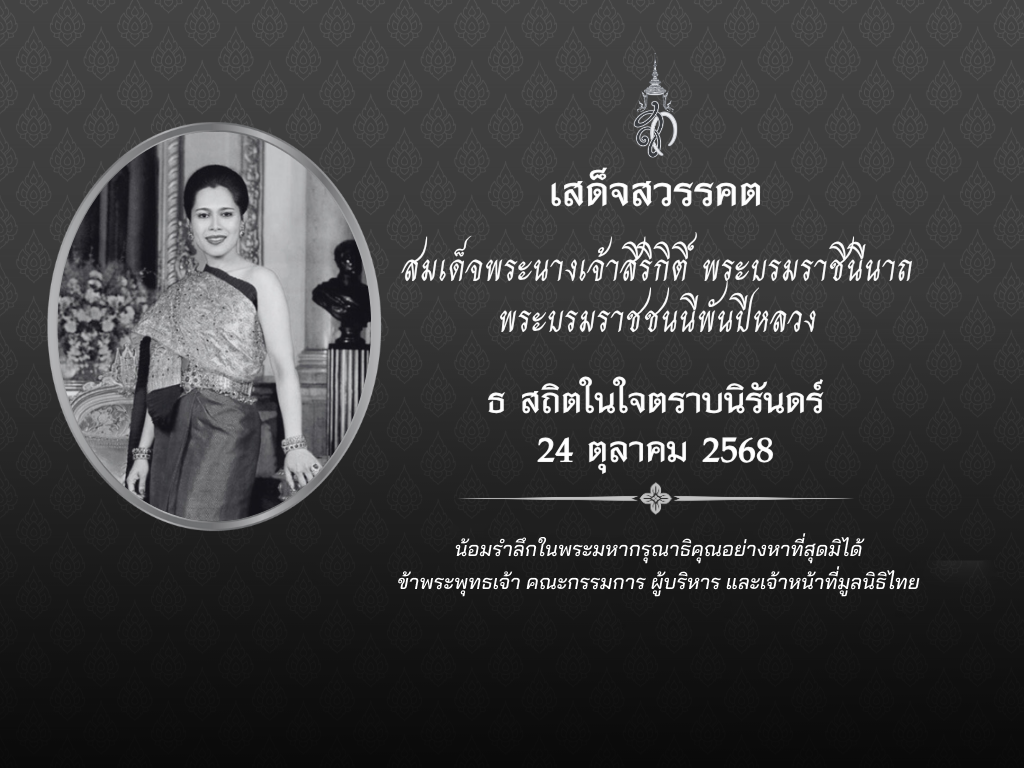
The annual robe presentation – (Pali: Kathina) – is a one-month-long Buddhist celebration enthusiastically observed in Theravada Buddhist communities in many countries and regions in Asia such as southeastern Bangladesh, Cambodia, southern China, northern India, Laos, northern Malaysia, Myanmar, Sri Lanka, Thailand, and Vietnam. It is usually observed in October and November. For this year in Thailand, the period of Kathina is from 22 October to 19 November 2021.


The two pictures of Buddhists of five countries – Cambodia, Laos, Myanmar, Thailand, and Vietnam – organized a joint Kathina robe presentation ceremony in 2019 (Photo credit: https://bit.ly/3bG84B9)
What Is Kathina?
According to Bhikkhu P.A. Payutto in Vision of the Dhamma, Kathina is a formal act of the Buddhist Sangha performed in the last month of the rains following the rains retreat (Pali: Vassa). As the fourth and last month of the rainy season has been set aside for the seeking and making of robes as a preparation for resumed mendicancy, a disciplinary rule further prescribes that all monks who have completed the rain residence together in a monastery seek pieces of cloth, make them into a robe, and present it by vote in assembly to one among them whose robe is most worn.
The process of making the robe must be finished in one and the same day, requiring every monk to participate. Here lies the spirit of Kathina, that is to say, the test of unity and harmony of those who have spent community life together for the whole period of the rainy season. Here again lay devotees come in to offer their help to the monks.
Moreover, as this ceremony can be performed during only one specific month and one monastery can perform it only once within that limited period, the Kathina has been regarded as a very special occasion. Starting as a merit-making ceremony of presenting the Kathina robe to the monks, it has developed into a big festival with celebrations. In Thailand, there are many Kathina festivities where robes are presented to monasteries in different communities and in faraway provinces. The spirit of unity, harmony, and cooperation, expands beyond monastic communities to become unity and cooperation among all Buddhists, both monks and laypeople.
Why Is Kathina Important?
Buddhists believe that Kathina is itself a great merit-making. They support Buddhism and promote Buddhist causes through supporting the monks who have just completed a period of three months of the rains retreat (Pali: Vassa) during which they seriously study the Buddha’s teachings and take up a vigorous meditation practice.
As mentioned by Bhikkhu P.A. Payutto in Vision of the Dhamma, Kathina is also an occasion to build, maintain, and strengthen the spirit of unity, harmony, and cooperation among Buddhist communities, both monks and laypeople.
Economically, Kathina festivities in different communities or in faraway provinces help distribute income and even create jobs. For example, a temple may receive donations to fund a construction project in the temple, which will create jobs among villagers.
How Is It Usually Observed in various places?
To see how important Kathina is, I’d like to draw attention to the preparation and presentation of Kathina robes by the Chakma people, a tribal group from the eastern-most regions of the Indian subcontinent – which are the largest ethnic group in the Chittagong Hill Tracts region of southeastern Bangladesh, and the second-largest in Mizoram, India. The Chakma tribe of Rangamati of Chittagong in Bangladesh was recorded to have harmoniously prepared yellow robes to offer to monks, starting with preparing a robe-making frame themselves. After making the robe, they took it together with various religious items in a huge procession to a temple. Finally, they happily and respectfully offered it all to the monks. See the pictures below taken from https://bit.ly/3mcJGNE.


Chakma people are making a robe-making frame, and then making cotton.


They are dying a fabric yellow.


They are weaving the yellow fabric and making a yellow cloth.

They are sewing yellow robes. Yellow robes are ready to be offered to monks. All these processes of making a yellow robe are completed in 24 hours.

The finished robes.


The yellow robes are being taken in a huge procession to a temple.




The robes are respectfully offered to the monks. Money is also donated to the temple for maintenance of the temple.

How Is Kathina Observed in Thailand?
Thailand is a Buddhist country. Nearly 95% of population are Buddhist. Therefore, we celebrate this religious ceremony throughout the country.
However, unlike the Chakma people above, we Thai Buddhists do not make the yellow robe by ourselves; we buy it from a shop which sells a ready-made robe, then take the robe in a big procession to a temple and offer it to the monks.

A ready-made robe, the main item of Kathina. (Photo credit: http://www.mahabunhome.com/kathin.html)

Together with the robe, there are other religious items, such as an alms bowl, that are also offered to monks. (Photo credit: https://www.tigernews.tv/2020/10/17/270948/)

Money trees are also donated to the temple along with the Kathina robe, so that the temple will have money to operate. Sometimes Kathina ceremony is also a fundraiser occasion. For example, the temple will spend the money on a new building. (Photo credit: https://pantip.com/topic/37498627)
Who Observes Kathina Ceremony in Thailand?
Almost every Buddhist in Thailand is involved in the Kathina robe presentation – directly or indirectly. Directly, he or she may participate in the robe presentation ceremony at a temple. Indirectly, without going to a temple, he or she may donate some money to a personal Kathina fund arranged by any individual who will collect and donate money to a designated temple.
A lot of wealthy Thai people look forward to this ceremony as an opportunity for them to sponsor the Kathina ceremony at least once in their lifetime. However, those who cannot afford to be sole sponsors often join what is known as “United Kathina”.
In recent times, it has become quite popular for a group of Thai Buddhists, particularly those from big cities, to offer Kathina to a temple far away from their hometowns as they prefer supporting temples in rural areas. Sometimes they even go to offer Kathina to the monks in other countries.
The King of Thailand and members of his family themselves usually go to various Buddhist temples in Bangkok to perform this rite. His representatives also offer Kathina to temples across the country.

The present king and the queen offered the royal Kathina robe to the monks at Wat Ratchabophit (temple) in Bangkok in October 2019.
(Photo credit: https://www.sanook.com/news/7930131/)
There is a tradition for the king to go aboard the spectacular Royal Barge procession along the Chao Phraya River to the Temple of Dawn (Wat Arun) to preside over the Royal Kathina ceremony every year.


Members of Buddhist communities in cities, towns, and villages take part in this pious function in their own communities. For example, the Governor of tourist-friendly Phanga in the south of Thailand leads a big group of Buddhist devotees to offer Kathina robes to a temple in the province in October 2021 (Pictured below).

(Photo credit: https://www.tigernews.tv/2020/10/17/270948/)


(Photo credit: https://dhamma-media.blogspot.com/2016/08/blog-post_19.html
C.F. Fong, a Malaysian Buddhist, wrote that about four or five years after the Buddha attained enlightenment, he was dwelling at Jetavana Mahã Vihãra near Sãvatthi City, the capital of the Kosala kingdom ruled by King Pasenadi. A group of thirty monks who had been ordained by the Buddha himself came from Sãket city, – just after observing the three months of rains retreat – to visit the Buddha. The Buddha greeted them, asked them about their retreat and journey, and noticed their wet and torn robes. A female disciple of the Buddha, Visakha Mahã Upãsikã, was also visiting and listening to the Buddha expounding the Dhamma. When she saw the monks in tattered and worn robes, she asked the Buddha’s permission to offer new robes to the monks, and the Buddha granted her request. Since then, the Buddha granted the monks the opportunity to search for robes in various places and even to accept robes offered by donors during the period of one month from the middle of the Eleventh Lunar Month to the middle of the Twelfth Lunar Month. This period is called Kathina.

As there were no sewing machines or textile factories in those days, the preparation of robes for monks required much manpower and coordination. It could not be done in a single day. The Buddha realized this problem and allowed his lay disciples to prepare and make robes for any monk who needed them. The process required searching for appropriate fabric, washing it, cutting it, sewing the pieces together into robes, coloring the robes, and drying them. After that, the robes were offered to the monks who needed them with the consent of the Sangha.
For further reading and watching:
- Kathina: The Robe Offering, A Major Theravada Observance at https://bit.ly/3CkpmiY
- Thod Kathin Robes Offering Ceremony (Kathina) by Roy Cavanagh · November 5, 2012 at https://bit.ly/3pDPHVL
- Kathina-Robe Offering Ceremony 3rd November 2562 B.E. At Wat Phra Dhammakaya, Thailand at https://bit.ly/3Go6JgE
- Kathina Ceremony at https://bit.ly/3Gov1a7
- Annual Kathin (Robe Presentation to the Monks) Ceremony at Wat Anand at https://bit.ly/3mhx9J6
- Significance of Rains Retreat (Vassa) in Theravada Buddhism, August 12, 2020 / Ariubey at https://bit.ly/3GyJil1
- 05-15-16 The Significance of the Kathina Ceremony at https://bit.ly/3mr8ZeX
Author: Paitoon Songkaeo, PhD
Cover Graphic: Fahon Mongkolrat
Disclaimer: This article is an opinion of the writer who wishes to share with general readers his knowledge and experience in Buddhism and concerned scientific researches.




